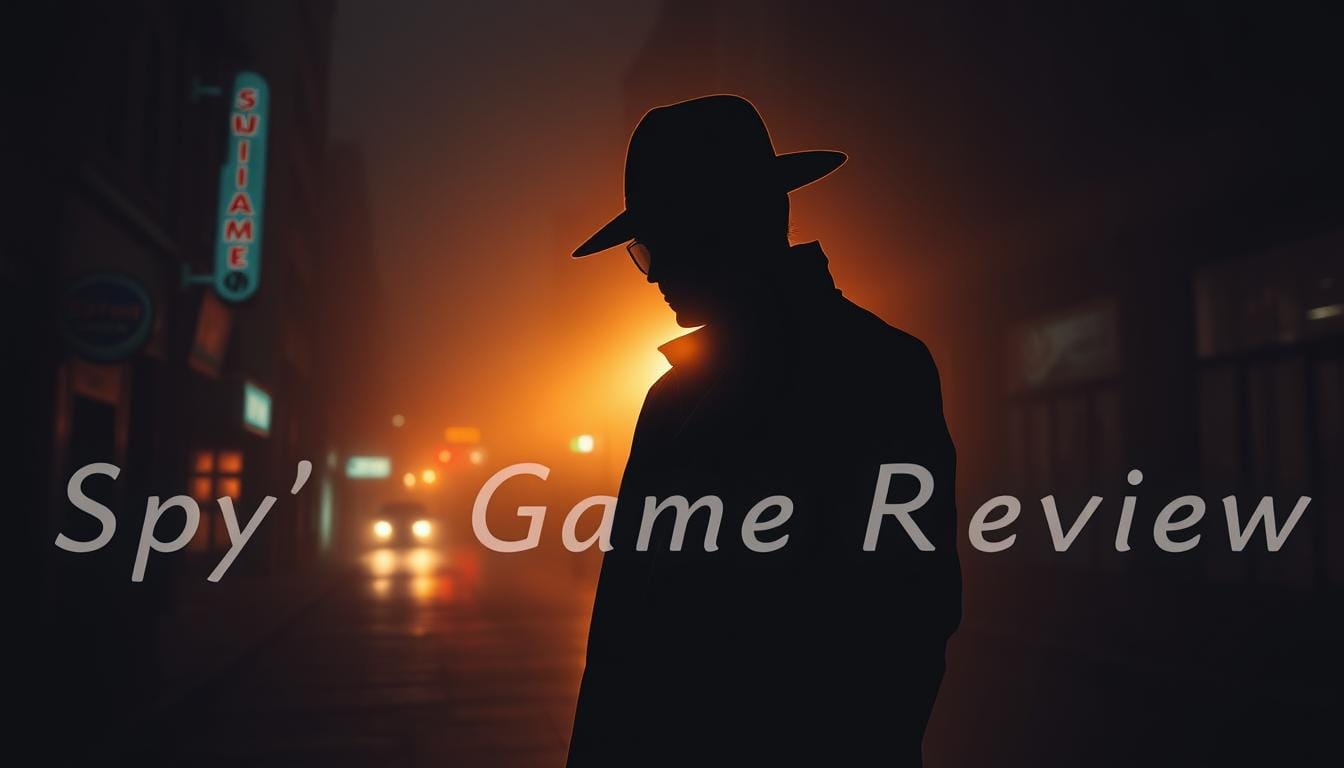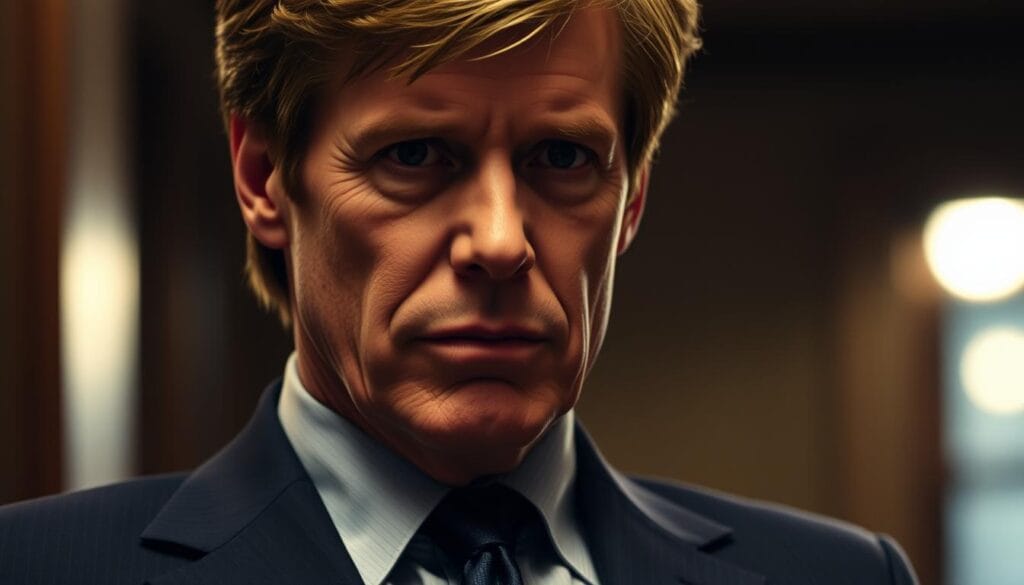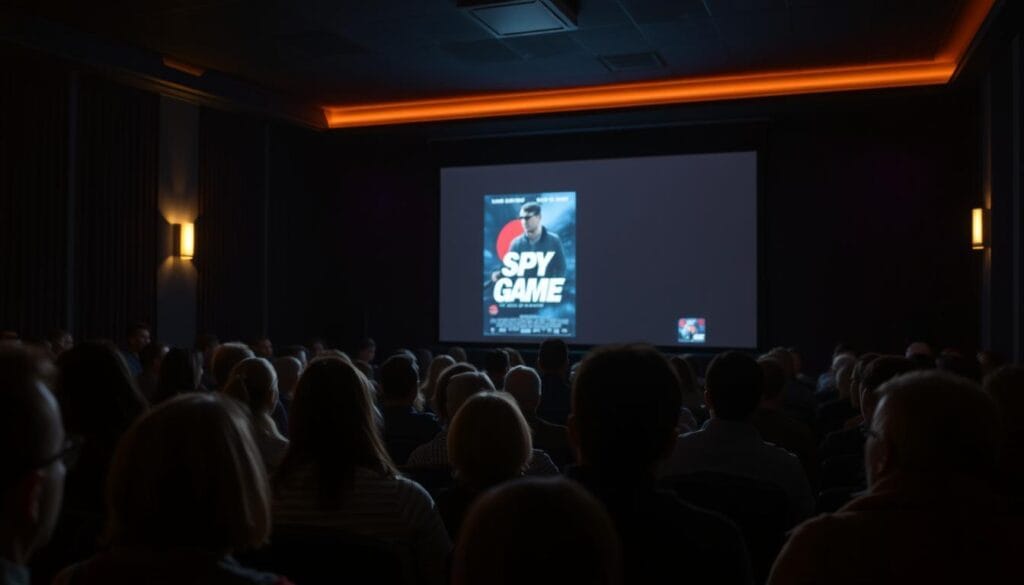This concise review gives you expert insight into why Tony Scott’s 2001 film still captivates. Expect a clear recommendation, a snapshot of ratings, and where to find it for streaming in the United States.
The piece places the movie within the wider landscape of espionage cinema while highlighting its unique energy, structure, and character-led stakes. It explains how flashbacks, a ticking clock, and globe‑spanning set pieces drive momentum without relying only on explosions.
You’ll read balanced coverage of performances, direction, themes, and content advisories. The analysis connects high-stakes geopolitics with intimate mentorship to show why the moral choices feel current.
For context on the film’s production and early reception, see this contemporary take on Tony Scott’s work in the press: a 2001 Entertainment Weekly piece.
Key Takeaways
- Spy Game Review.
- Clear verdict on whether the film is worth streaming tonight.
- Concise notes on the stars, direction, and thematic core.
- Where to stream and what to expect from pacing and tone.
- Content advisories for sensitive viewers.
- How the film’s moral calculus still makes sense today.
Quick take: Is Spy Game worth your time right now?
This verdict is simple: Yes — if you want a sleek, character-driven thriller with momentum, this film is a confident pick for tonight.
Our verdict at a glance
Verdict: A polished, craft-forward movie led by charismatic stars that rewards close attention.
“The outcome of the kinetic Spy Game is never in doubt, but it is fun watching Robert Redford and Brad Pitt work.”
Why this smart thriller still plays in the present
The ratings snapshot helps set expectations: a 64% Tomatometer from 134 reviews and a 75% audience score from 100,000+ ratings. That mix points to a crowd-pleaser with real craft.
Rather than pure spectacle, the film uses time pressure and clever planning to build tension. You get negotiation, deception, and satisfying payoffs.
- Great for adults who like character-led suspense.
- Plays smoothly on casual movie nights and invites deeper discussion for enthusiasts.
- Bottom line: a smart, tightly wound way to spend an evening.
What Spy Game is about: a taut rescue told through flashbacks
At its core, this story is a rescue mission compressed into a single, harrowing night. Nathan Muir, a veteran operative on the verge of retirement, learns that Tom Bishop is detained in a chinese prison and faces execution at 8 a.m. the next day.
The setup: Nathan Muir, Tom Bishop, and an 8 a.m. deadline
The inciting crisis is simple and urgent: Muir has hours to change Bishop’s fate while agency leaders weigh disavowal amid diplomatic pressure. The deadline gives every scene a razor edge.
How the story is told: CIA boardrooms versus the world outside
The film’s story told in two registers. Sterile boardroom hearings show institution-first logic. Field sequences reveal the messy cost of tradecraft in the wider world.
- Flashbacks map the mentor‑protégé bond and explain past choices.
- Each return to the present reframes what we thought we knew.
- The structure rewards attention, making the payoff earned, not forced.
“The movie shows how intelligence work bends truth to fit agendas.”
Spy Game performances that anchor the film
Strong acting anchors the film, turning strategic talk into tense, human drama.
Robert Redford as Nathan Muir: mentorship, wit, and moral calculus
Redford plays Muir with calm control. He is dry, clever, and always three moves ahead.
His understatement keeps scenes electric and gives the story moral weight.
Brad Pitt as Tom Bishop: disillusionment behind the daring
Brad Pitt brings both courage and weariness to Bishop.
His physicality sells the danger, while small gestures reveal growing doubt.
Standout support: Catherine McCormack, Stephen Dillane, Larry Bryggman
Catherine McCormack supplies emotional stakes that sharpen loyalty conflicts.
Stephen Dillane’s cool precision becomes the institutional foil to Muir’s pragmatism.
Larry Bryggman adds textured authority that makes boardroom scenes tense and consequential.
- Why it matters: The stars lift exposition into drama, a rare feat in mainstream movies.
- Critics cite performances as the film’s chief asset in many reviews.
- Together, the ensemble makes this a smart thriller grown-ups can appreciate.
Tony Scott’s direction: kinetic style with classic spy textures
Tony Scott stages each locale like a test: the choices characters make there reveal who they truly are.
The director emphasizes contrast. China, Vietnam, Germany, and Lebanon all carry their own texture. That variety keeps the film lively and purposeful.
From Lebanon to Berlin: set pieces that shape character
Scott mixes smoke-and-glass boardrooms with dust, rain, and grit in the field. Each location — Lebanon’s volatility, Berlin’s chill, Asia’s high-risk scenes — informs motive and risk.
Set pieces do more than thrill: they reveal what Muir and Bishop will sacrifice. The best moments act as fulcrums, where a single look or call resets the mission.
Comparing tones: Enemy of the State vs. Spy Game
While Enemy of the State trades on surveillance paranoia, this film favors strategy, patience, and persuasion.
“Scott’s framing and cutting keep information flowing without sacrificing mood.”
- Tony Scott orchestrates momentum through contrast.
- Framing keeps complexity clear and alive.
- The palette mirrors the moral ambiguity on display.
Critics in contemporary reviews praise the craft. It’s a quiet, precise thriller that proves restraint can be as exhilarating as spectacle.
spy game review: critical and audience reception
Critics and viewers have carved two main takes: one that praises craft and performances, and another that finds the movie stylistically strong but emotionally reserved.
Ratings snapshot
64% Tomatometer from 134 critic reviews and a robust 75% audience score from 100,000+ ratings paint a balanced picture.
What critics say
“A smart thriller for grown-ups”
Common Sense Media and other outlets highlight sharp direction and standout acting. Dissenting critics call it “all craft and no conviction” or a long meeting carried by Redford’s charisma.
Audience pulse
Fans emphasize clever structure, steady tension, and the chemistry of the stars. Many note it plays more like a strategic thriller than a loud action picture.
- Consensus: performances and craft win frequent praise.
- Some reviewers find the emotional core muted at times.
- Overall, audience reviews suggest lasting appeal for adult movie nights.
Themes and storytelling: loyalty, tradecraft, and the cost of choices
At its moral center, the film asks who we owe our loyalty to when choices cost lives.
It frames loyalty as a test: obligations to protégés, to institutions, and to one’s own conscience collide. That pressure gives each decision weight beyond a single scene.
Flashbacks as a lens on trust and betrayal
The flashback structure lets past compromises reshape present stakes. Moments from earlier missions arrive like evidence, forcing characters to answer for debts they thought closed.
Tradecraft here reads as quiet intelligence: not gadgetry but reading rooms, reading people, and choosing when to burn a bridge to save a life. Those small acts build the film’s tension more than any loud climax.
- At its core, a story about loyalty under pressure.
- The spy perspective shows how trust is earned and sometimes weaponized.
- The thriller trusts the audience to weigh motives instead of spelling them out.
“The film treats mentorship as a responsibility, not a ladder rung.”
Content guide (Common Sense Media): what parents should know
Use this guide to weigh intense scenes and mature themes against your household standards. Below is a concise, practical summary that mirrors common sense media-style assessments so families can decide quickly.
Violence & scariness
Expect tense, realistic sequences. The film includes a brutal beating, bloody torture, and images of casualties, amputees, and dead bodies.
These scenes are grounded and may unsettle sensitive viewers. Parents should treat the picture as adult‑level intensity.
Language
Strong language appears at key moments, reinforcing the film’s high-stress tone. It is not pervasive, but it is noticeable.
Sex, romance & nudity
Romantic moments are mild and non‑explicit. There is no graphic content, and sexual material is limited in scope.
Drinking, drugs & smoking
Drinking and smoking appear as character habits. They are present but do not drive the plot.
- Parents: Treat this as adult content; the realism of interrogation and torture raises emotional stakes.
- Use family viewing lists and your personal thresholds to decide if teens are ready.
- If you manage media via an app, mark these categories ahead of time to set expectations.
“A content-first decision helps ensure the viewing experience is engaging rather than overwhelming.”
Where to watch Spy Game in the United States
If you want to watch tonight, here’s the easiest way to queue up this classic thriller.
Where to Watch: Fandango at Home, Netflix.
Stream it now on Netflix with a subscription for instant access and minimal setup. This is the fastest path if you prefer a low-friction evening.
Digital purchase and rental
Prefer to own or rent? Fandango at Home offers both options so you can build a digital library. Owning makes rewatching key scenes and performances simple for study or group nights.
- Confirm availability: check your region in the Netflix app before you press play.
- Group viewing tip: coordinate start times and use captions for dense dialogue.
- Collector’s note: buying on Fandango at Home helps if you track titles across shows and movies.
Not in theaters, so the home-viewing format suits the film’s dialogue-driven tension and layered storytelling. If you follow reviews or are drawn by the stars, this is a straightforward, reliable pick for an evening at home.
Behind the scenes and credits
Behind the credits, a tight collaboration of director and writers shaped the film’s measured momentum. Director Tony Scott brought a kinetic eye that balances clarity with intensity. The result is a film that feels both urgent and composed.
Writers Michael Frost Beckner and David Arata structured the 8 a.m. countdown using flashbacks that reveal stakes in tidy, meaningful beats. Frost Beckner’s plotting gives each scene a purpose, letting characters earn their choices.
- Director Tony Scott shapes texture and propulsion, from Berlin’s chill to Lebanon’s volatility.
- Michael Frost Beckner and David Arata
- The script’s chess-like design lets Redford and Pitt play to their strengths without losing pace.
Credits worth noting include Catherine McCormack, Stephen Dillane, and Larry Bryggman, who deepen both institutional tension and personal stakes. In context, this collaboration stands as a precise counterpoint to louder 2000s thrillers like Enemy of the State.
“A showcase of how direction and writing can make talk as gripping as action.”
Conclusion
This film trusts small choices over spectacle. The story rewards patience and thought, making each move feel earned rather than staged. It’s a satisfying close for viewers who favor strategy and consequence.
Robert Redford and Brad Pitt give lived-in turns that lift the material. Watching Tom Bishop count down and feeling Nathan Muir weigh loyalty turns routine beats into moral drama.
The director’s craft keeps the plot clear and the stakes urgent. As a concise review, the bottom line is simple: if you prefer brains to bombast, these stars deliver.
Add the title to your list and stream it tonight instead of chasing theatrical thrills. You’ll leave thinking about debts, choices, and what loyalty truly costs.























